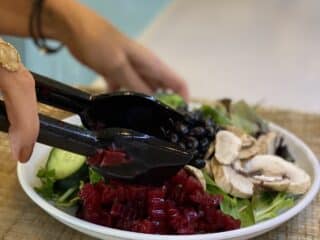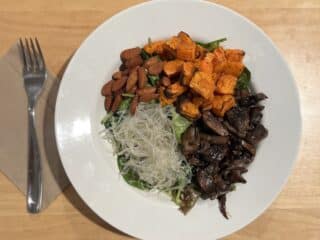
Plan Ahead
Planning is a key component of sticking to a grocery budget. Make a list weekly and prioritize the nutrient-rich foods first, such as fresh or frozen vegetables and fruits, lean proteins, and whole grains. Try to skip highly processed items and packaged snack foods, which can be costly relative to their nutritional value; instead, buy the ingredients for healthy snacks and prepare individual snack portions ahead of time to enjoy throughout the week.
Bean Me Up
Beans, lentils, and other legumes are not only affordable; their protein and fiber help to fill you up and they also supply important minerals, like iron and zinc. Dried beans are even less expensive than canned and can be bought in bulk in many grocery stores. Extend their use and save time by cooking up a batch and then add them to soups, stews, and salads throughout the week.
Follow Recipes
Eating on a budget does not have to be boring. There are numerous resources online that provide delicious recipes that also meet health and nutrition goals. The USDA has compiled over 800 recipes based on a $40 per week grocery budget to creatively stretch meals and make them affordable, tasty and nutritious.
Freeze It, Can It
Frozen foods are having a moment as consumers flock to the aisles to find affordable, long-lasting food staples. Frozen fruits and vegetables retain the same nutritional properties as fresh because they’re frozen at peak ripeness and processed very soon after harvest.
From chickpeas to canned tuna, the grocery aisles are filled with affordable, long-lasting canned foods. Look for low sodium versions of pantry staples such as beans, fish and corn. One of my favorite staples is canned tomatoes which can go into soups, stews and sauces. These affordable and versatile veggies are packed with vitamin C, fiber, and are an excellent source of the antioxidant lycopene, which supports heart health.
Snack Smart
On a tight budget, people often load up on snack foods. Most typical snack foods are highly processed and often loaded salt, sugar fats and, therefore, empty calories. There are many affordable snack options available in bulk, including nuts and dried fruit that can provide healthy fats, vitamins and minerals. You can use the staples in your refrigerator, freezer and pantry to make healthy snacks: thaw out some frozen fruit and use to top some yogurt, make a trail mix with bulk nuts and dried fruits, toss some canned garbanzo beans with olive oil and roast in the oven into a crunchy treat, or try a refreshing smoothie that adds protein and satisfies hunger.
When times are tough and money is tight, we often default to highly processed foods. But healthy eating doesn’t have to break your budget – it just requires reading labels and knowing what better food choices to make to keep you and your family learning to love healthy and affordable foods.
By Susan Bowerman, M.S., RD, CSSD, CSOWM, FAND – senior director, Worldwide Nutrition Education and Training






